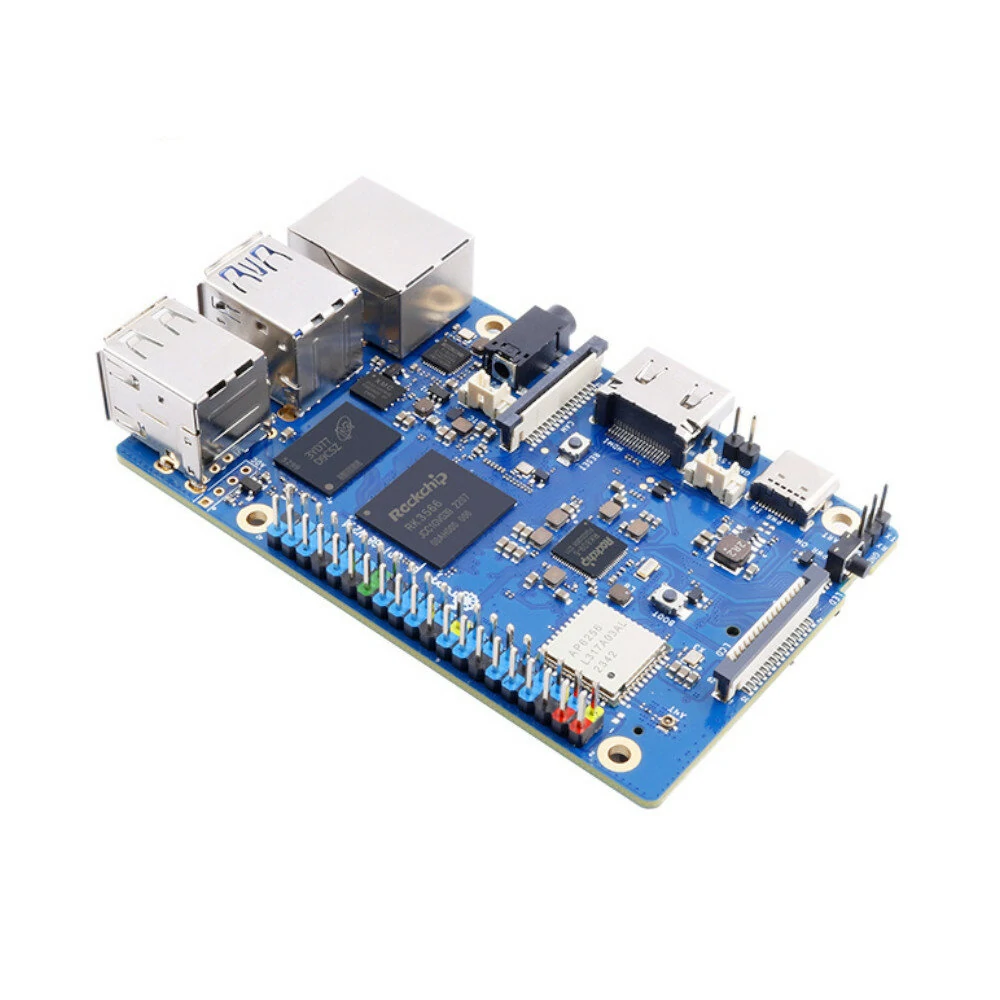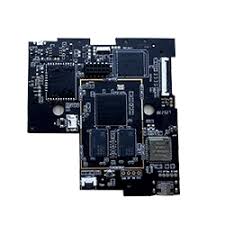
Venture into the field of Android application engineering for single-chip computers. This comprehensive guide will grant you the core understanding and usable procedures to effectively program your own Android-driven SBC assignments. From grasping foundational ideas of Android design to exploring the complex world of SBC technology, this guide will lead you towards a effective creation process.
- Survey the extensive of available SBC environments and their respective features.
- Learn thoroughly essential Android building apparatus, including Android Studio, SDKs, and emulators.
- Comprehend the intricacies of setting up your SBC environment for seamless Android execution.
Scrutinize best practices for creating robust and reliable Android apps tailored for SBC hardware constraints.
Producing Android Applications on SBCs
Maximizing resources of a Single Board Computer (SBC) for Android application building is an increasingly popular approach. These compact and versatile tools provide a cost-effective space for innovation, enabling builders to tap into the capabilities of Android without the need for a traditional desktop. By harnessing the SBC's resources such as its processor, memory, and connectivity options, developers can craft Android applications that range from simple utilities to more complex tools. The capability to customize the hardware and software environment further amplifies the flexibility of SBCs for Android development, making them a beneficial tool for both hobbyists.
Unlocking the Power of Android Dev Boards for IoT Projects
For budding innovators delving into the world of Internet of Things (IoT), Android dev boards present a robust platform to bring their innovative ideas to life. These miniature boards, often equipped with advanced hardware and easy-to-use software development kits (SDKs), provide a trustworthy foundation for prototyping a wide range of IoT tools. From home supervision systems to industrial monitoring mechanisms, Android dev boards empower organizations to engineer cutting-edge IoT projects with effectiveness.
- Employing the extensive Android ecosystem, developers can leverage a vast library of modules specifically designed for IoT devices. This range of resources allows for optimized development and encourages the creation of cutting-edge IoT solutions.
- Furthermore, Android dev boards often feature embedded connectivity options such as Wi-Fi, Bluetooth, and cellular, facilitating seamless interaction with other devices and cloud platforms. This connectivity capability is fundamental for enabling real-time data transmission and remote administration of IoT platforms.
- As a final point, the community-driven models of Android dev boards fosters a thriving ecosystem of developers, providing ample assistance for tackling any challenges encountered during the development process.
Surveying Multimedia Features of Android SBCs
The field of multimedia applications is constantly progressing, pushing the boundaries of what's possible. In this dynamic landscape, Android System-on-Chips (SBCs) have emerged as a forceful option for developers seeking to create innovative and engaging experiences.
The stated compact yet well-furnished SBCs grant a uncommon blend of processing efficiency, connectivity, and multimedia strengths that make them advantageous for a large selection of applications.
Involving high-definition video playback to immediate audio processing, Android SBCs are prepared to handle the demands of today's multimedia milieu.
- Additionally, their open-source nature permits developers to adjust hardware and software to fit specific application standards.
- That level of customizability creates opportunities for developers to surpass the limits of multimedia innovation.
Go Beyond Defaults with Android Dev Boards
A development board such as the Raspberry Pi or particular Nexus Player empowers a unique opportunity to customise your Android experience. By directly interacting with the underlying architecture, you can refine everything from the platform layer to targeted software. This level of authority allows builders to push boundaries and formulate truly exclusive Android environments. Whether you're seeking to upgrade your device's performance, discover new capabilities, or simply resolve your curiosity, a dev board can grant a world of potential.
- Acquire knowledge of the fundamentals of Android development
- Construct custom ROMs and kernels
- Examine new apps and features
- Link your device to supplementary interfaces
Resolving Android Errors on SBCs
When working with Android development on Single Board Computers (SBCs), you might encounter a variety of challenges. These can range from simple configuration errors to complex software bugs. Effective debugging and troubleshooting are crucial for identifying the root cause of these problems and restoring your Android environment to full functionality. Employ the vast resources available online, such as forums and documentation, to gain insights into common issues faced by other developers in similar setups.
Start by carefully reviewing your activity records for any error messages or warnings that might provide clues about the problem. Use a comprehensive logging strategy within your Android application to capture relevant information during runtime. This can help pinpoint specific areas where errors are occurring. Don't hesitate to examine different configurations and settings to see how they affect the behavior of your system.
- Invest time in understanding the hardware capabilities of your SBC, as limitations in processing power or memory can contribute to Android performance issues.
- Develop a strong understanding of the Android SDK and its tools to effectively debug your applications.
- Stay updated with the latest distributions of both Android and your SBC's firmware, as these often include bug fixes and performance improvements.
Advancing Android SBC Functionality
When operating Android-based microcontroller units small-scale computers, maximizing throughput is paramount. To achieve this, developers and engineers can leverage a range of plans. This involves thoroughly improving software and hardware components to maintain seamless running. Key areas for boost include computational oversight, power consumption, network connectivity, and application efficiency.
- Targeting real-time task management is essential for applications that demand immediate outputs.
- Harnessing lightweight toolkits can greatly reduce memory consumption, thereby boosting overall responsiveness.
Regularly upgrading the Android operating system and programs is necessary for addressing security loopholes and benefitting quality developments.
Deploying Security Strategies for Android SBCs
Securing your Android devices against threats is paramount. Utilizing sound security best practices for your Android System-on-a-Chip (SBC) implementation can significantly mitigate risks. Regularly upgrade your SBC's software to address exploits. Establish robust access management to limit user permissions and network interaction. Conduct periodic security assessments to identify potential weaknesses and configure necessary safeguards.
- Guide your users about common security threats and best practices for protecting their devices.
- Shield sensitive data at rest and in transit using strong protocols.
By adhering to these best practices, you can create a more secure environment for your Android SBC.
Exploiting Sophisticated Android SBC Capabilities
The world of embedded Technology (SBCs) provides a compelling platform for developing cutting-edge Android applications. By synthesizing the power of Android with the unique capabilities of SBCs, developers can create comprehensive solutions across diverse fields. This approach offers remarkable flexibility and customization options, permitting the development of niche applications that cater to specific specifications. Whether it's for smart home gadgets, SBCs coupled with Android development open up a vast range of possibilities.
- Capitalizing on the low-power nature of SBCs for resource-constrained environments.
- Constructing Android applications with prompt responsiveness for time-sensitive tasks.
- Connecting Android's user interface capabilities with custom hardware peripherals for a fluid experience.
The combination of Android and SBCs empowers developers to push the horizons of innovation, yielding transformative applications that reshape various fields.
SBCs Emerging in Android's Future
The environment of Android development is rapidly evolving, with Single Board Computers (SBCs) emerging as a prominent force. These compact and versatile hardware offer developers a powerful platform for experimentation, prototyping, and even full-scale application deployment. With their affordability, expandability, and growing ecosystems, SBCs are poised to alter the way we engineer Android applications. Builders are rapidly embracing this emerging paradigm, unlocking a world of possibilities for creating captivating user experiences.
From embedded frameworks to wired devices, SBCs provide the perfect foundation for a wide range of Android projects. Leveraging the power of open-source software and hardware, developers can construct innovative solutions that handle real-world challenges.
Inspirational Android SBC Examples
Android Single Board Computers (SBCs) are effective little devices that can be used to create a wide range of undertakings. Given you're a trainee, there are plenty of entertaining project ideas to explore. One common category is automated household solutions, where you can use an Android SBC to handle your equipment. You could also design a individual media center, deliver content on a larger screen, or even investigate robotics and software development.
- Several Various android dev board A few Diverse
- Certain other ideas include designing educational games, modeling wearable instruments, or even supporting open-source projects. The possibilities are truly immense.
